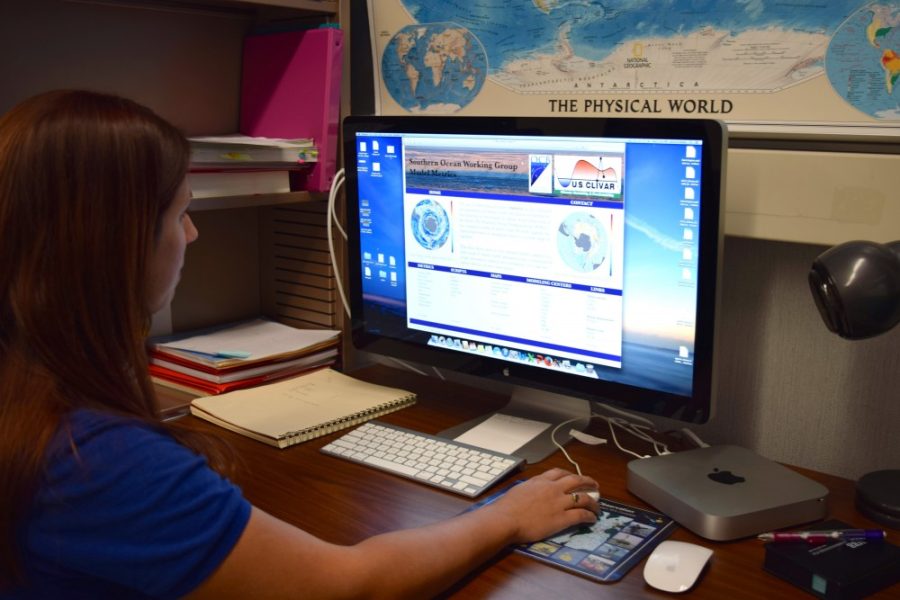Joellen Russell, an associate professor of geosciences, was recently awarded a $2.36 million grant towards learning more about the Southern Ocean’s role in climate regulation.
The grant is part of the Southern Ocean Carbon and Climate Observations and Modeling program, which includes Russell and scientists from nine other institutions. The National Science Foundation’s Division of Polar Programs funded SOCCOM with a $21 million federal grant to study the Southern Ocean’s role in climate regulation and biogeochemistry.
Russell explained that 93 percent of the excess heat trapped by the man-made greenhouse gases released into the atmosphere is being soaked up by Earth’s oceans. Of that 93 percent, about 70 percent is going into the Southern Ocean, which encircles Antarctica.
Monitoring this ocean heat uptake is important because it directly impacts temperatures in Tucson, Russell said.
SOCCOM is comprised of three components. The observational component consists of 200 biogeochemical floats that will be deployed into the Southern Ocean for data collection. The floats are constructed at the University of Washington and designed with sensors from the Monterey Bay Aquarium Research Institute, according to Russell.
“We really need to know what the bulk of the deep ocean is doing,” Russell said. The autonomous floats do profiles in the ocean every five days using pH, oxygen, nitrate and optical sensors in addition to temperature and salinity.
The second component is modeling, which is headed by Russell here at the UA. The modeling component will allow researchers to see how the ocean heat is mixing and changing using a new generation of high-resolution earth system models. The modeling component will attempt to bridge between the model world and the real world in hopes of being able to project the future trajectory of the earth’s climate.
“We are trying in real time to get a handle on where that heat is going and how fast, and what the major mixing processes are,” Russell said. “For that, we need computer models of the ocean’s circulation and atmospheric circulation, and how they interact so that we can tell what happens next. We can run the models into the future, to see if the [carbon dioxide] keeps increasing like this, how will the mixing change?”
Russell will be leading a team of scientists to design a series of tests to analyze the models in order to improve the representations of the Southern Ocean in them and prevent further damage to its ecosystem.
“There are several different models out there, and you’d expect them all to come out looking the same,” said Jessica Rudd, a geosciences senior. “But they don’t because the people who code the models make different assumptions about what is important and put more emphasis on one variable over another. No model right now can exactly replicate the observations.”
Rudd is developing a website that is intended to be the first Southern Ocean climate model atlas. Her goal is to collect models and observations and to publish the images for public use. Rudd said that the creation of the website will help disseminate SOCCOM analyses and methods to other scientists, stakeholders and the public.
The last component is lead by Climate Central, a nonprofit organization consisting of scientists and journalists. The organization’s goal is to create broader impacts on public policy by informing policy makers, researchers and the general public about SOCCOM research.
Russell said that current generations will experience the impact of the Southern Ocean’s role in climate regulation.
“Living in Arizona, it really matters how much heat and carbon the Southern Ocean takes up,” Russell said. “It is a direct impact on the next 20 years. Your lifetime will be affected by how much mixing goes on.”
_______________
Follow Kimberlie Wang on Twitter @DailyWildcat









